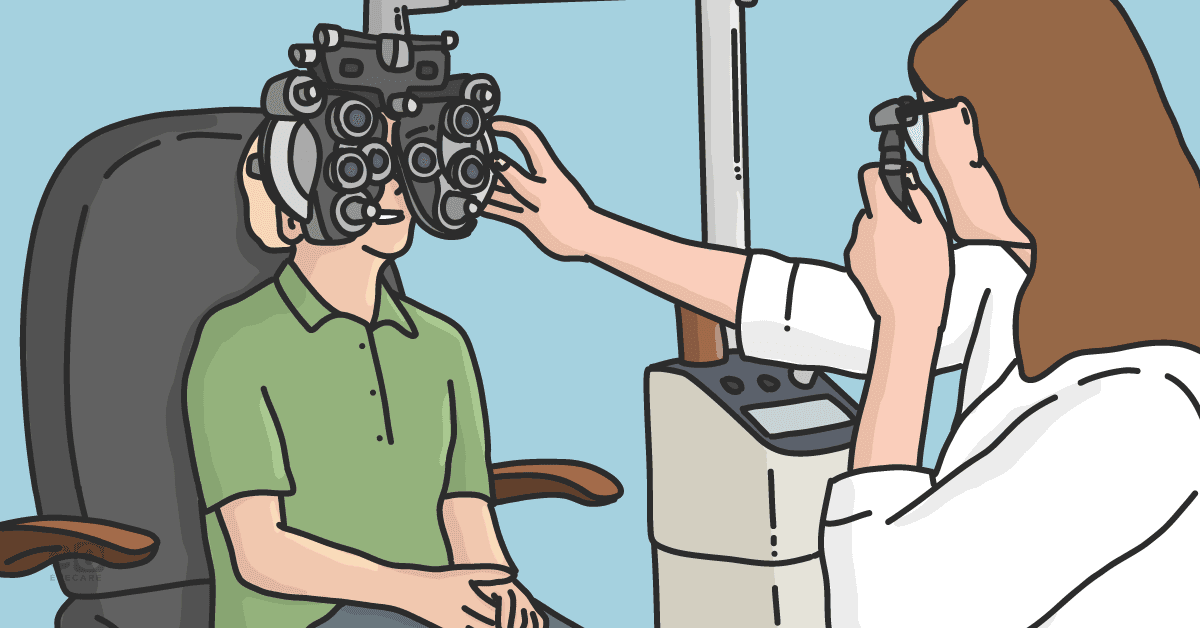Optometry is a unique healthcare profession; in most practices, it is a marriage between medical and retail.
Although having an optical can be an exciting endeavor, most optometrists did not go into the field to own a retail location. They are in the business of helping people and often feel awkward “selling” their patients products like glasses.
That’s why prescribing with a purpose is so important. When you prescribe glasses to meet patient needs, you are fixing an issue, not selling them a product. Here are some of the most common problems you may face in practice, along with prescribing solutions to meet your patients' visual needs.
Problem 1: Student can’t see the board with their reading glasses
Solution: Anti-fatigue lenses.
Anti-fatigue lenses are a great option for your pre-presbyopic patient who has near work glasses but has stopped wearing them because they don’t like having to take them on and off. I find this to be a common complaint for my college-age patients who are in a much larger lecturer hall. The anti-fatigue lenses allow the wearer to see clearly at distance while giving a boost to her focusing system when looking down for reading.
This allows the wearer to keep the glasses on when distance and near viewing is required. If your patient’s near needs exceed that of anti-fatigue lenses you can move them into a progressive lens design. This same prescription with a purpose strategy can be applied to presbyopic patients complaining of having to take on and off reading glasses. Moving them to progressive lenses will alleviate this issue.
Problem 2: Presbyopic patient can’t see the computer screen with progressive lenses
Solution: Computer-specific glasses (either single vision or progressive)
Although most people want to experience comfortable vision all day long with one pair of glasses, optometrists know this is often not possible, especially for presbyopes. A little patient education goes a long way in prescribing with purpose for the computer.
Once you educate patients that progressive lenses are not meant for long-term, desktop computer viewing since the computer prescription is located lower in the lens, they begin to realize their problems with the progressive on the computer are not because of prescription or measurement error, but a limitation of the lens design. This makes it easy to prescribe computer glasses for this specific task.
I’m always surprised how many of my returning patients go out of their way to thank me for prescribing computer glasses because their eyes now feel so much better while working on the computer. This situation also offers the opportunity to introduce multifocal contact lenses since they are not position-specific. Many patients are not aware that there are contacts that can help them see both distance and near.
Problem 3: Patient has tried progressive lenses previously but could never adapt
Solution: Recommending the newest technology progressive lenses or lined bifocal
In these cases, I always ask my patient where they purchased their previous progressive lenses. Optometrists know that not all progressive lenses are created equal, but most laypeople do not. Patients are often looking for the least expensive lenses, which we know means older and harder to adapt to lens designs.
For these patients, I educate them on the differences between progressive lenses and then prescribe the latest technology progressive lens. Further, for patients who will self-report being “very sensitive to change” or who have vertigo issues, I do not recommend retrying a progressive lens in the newest design. Instead, I recommend a lined bifocal and/or multifocal contact lenses. I educate my patient on how a line-bifocal should not stimulate vertigo like progressive lenses because of the simpler lens design.
Those patients who are tired of switching from distance to near glasses are usually happy to give it a try. For those who do not want a line on their lenses, multifocal contact lenses can be a good option. Again, they should not stimulate vertigo like a progressive lens.
Problem 4: Patient can’t see well out of their non-prescription sunglasses when enjoying their hobby
Solution: Prescription sunglasses
This, to me, is the easiest example and opportunity to prescribe with a purpose in order to problem-solve. It always surprises me how many patients are unaware they can get prescription sunglasses.
This is especially true for your presbyopic patients who often tell you how they are layer readers on top of their sunglasses to see up close. They are thrilled to purchase a pair of sunglasses that they can see well out of at all distances.
Takeaways for prescribing with a purpose
Engaging with your patients and taking the time to really understand and ask questions about hobbies, work, and lifestyle during your exam helps draw out vision-based complaints.
You can then prescribe with a purpose by offering specific product-based solutions to meet their visual needs and provide them with an unmatched experience.
